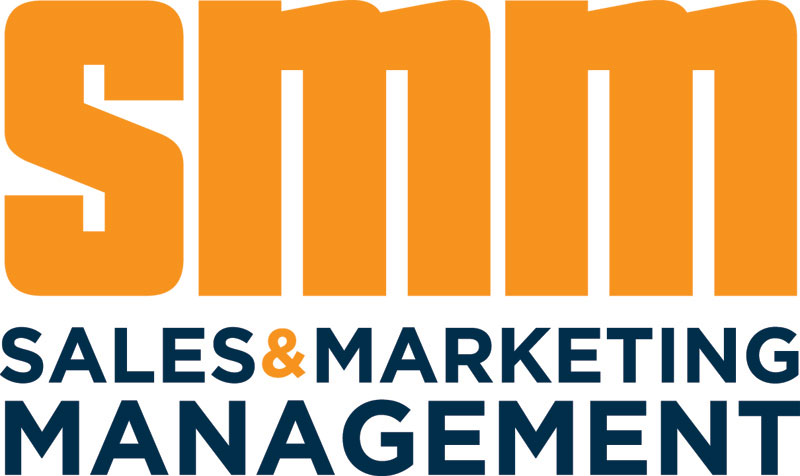All Resources
|
Frequently selected for their ease of use and accessibility, gift cards are a tried and true incentive often used to encourage sales teams to meet and exceed their goals. However, many people think gift cards can be impersonal, and that the recipient may not feel truly recognized. When managers and executives shift their view of gift cards to branded currency, these simple rewards can quickly energize the sales team's engagement and performance.
|
|
For years, marketers have managed corporate social network accounts (i.e. LinkedIn, Twitter, Facebook,...) for branding purposes. Now, leading companies like IBM, ADP, and Hewlett Packard are going one step further. They are teaching their sales people how to leverage their social networks to generate high quality leads. The reason is simple. As B2B buyers rely more and more on social networks for purchasing decisions, successful sellers are sharing valuable content to position themselves as experts and attract buyers.
|
|
A recent survey found that organizations exceeding revenue goals stand out as developing thoughtful, buyer-first strategies. And at the heart of these strategies is sales and marketing alignment.
|
|
Sales and Marketing teams exist in highly competitive, ever-shifting environments. Determining your teams’ focus can be a game changer and help set the stage for immediate and long-term WINS.
|
|
Our post-pandemic recovery has left us with instability in our supply chain, inflation, and a unique work environment. As a result, even the most solid retention and growth strategies must adapt and continue to raise the bar to ensure their contributions to brand and business value keep pace. There has never been a better time to reconsider the role of Business-to-Business (B2B) incentive and loyalty strategies.
|
|
This webinar will teach 4 unique strategies that will position and enable sales managers to be more successful. For the past 30 years sales teams have hovered around roughly 48 to 52% not hitting their quotas with this statistic changing very little. This means the sales industry to a certain extent has flatlined. This webinar will teach accountability tactics that can position sales managers to be more successful when managing their teams.
|
|
Companies around the globe have canceled sales meetings and training sessions and are enacting work from home policies to help prevent the spread of COVID-19. Yet sales enablement professionals must get new hires up to speed and keep teams on track in a world where face-to-face meetings are impossible.
Traditional training and sales enablement approaches won’t solve this challenge. But building a virtual training program when you’ve relied on in-person sessions can feel like an overwhelming task. Fortunately, there are proven tactics that organizations can employ to train across geographies and time zones.
Use this guide to learn how the right strategy and technology can help you manage high-performing virtual teams.
|
|
Why Your ROI Story Is Stronger Than You Think
If you’re in charge of training a sales team, you know how hard it is to ensure they properly receive
and retain training while in the field. But since organizations often treat sales training as an unavoidable
cost of doing business, you may find it even harder to justify investing in technology that would
improve your learning program.
Sales, sales enablement, and sales training leaders often don’t realize how much investing in sales
training technology contributes to a stronger ROI. That’s because most companies haven’t instituted
best practices for identifying the business impact of better sales learning. Most limit their tracking to
activity metrics like usage and adoption, or they capture anecdotes about how a recent training
contributed to closing a specific deal.
Quantifying the full return on your sales training investments helps you more effectively champion your
initiatives and win more resources. That way, you can improve your team’s performance and create a
virtuous cycle of continuous improvement.
Here are four sources of ROI you’re already delivering that you should capture to demonstrate how sales
training contributes to the bottom line of your organization.
Click below to download this eBook.
|
|
Digital Transformation is forcing all businesses to re-examine their business models, partnerships and how they sell. Frontline sales managers have to coach their resources to be sharper & more ready for all manner of customer conversations and to perform better than ever before because there is new competition around every corner.
|
|
Today, there are lots of ways to get hybrid sales training and enablement wrong.
But fear not!
|
|
Charts and graphs are an incredibly powerful way to present your data, but even minor mistakes can bury your insights in clutter and confusion. This e-book will help you tell a clear and compelling story every time with critical tips on color choices, choosing formats for different data types, avoiding "chart junk," and more.
|
|
Are your sales reps operating in a crowded marketplace where prospects are more rapidly becoming more knowledgeable and competitors more aggressive? In environments like these, it's easier than ever for your sales team and product messages to get lost in the noise.
|
|
LinkedIn isn’t just for business professionals and job seekers. It is the best platform to grow your business and network with your clients/prospects. Generating leads, brand awareness, building relationships, and making connections is just some of the value it provides.
|
|
Transform Your Sales & Marketing Enablement at the Speed of Business: Lessons from Microsoft’s Leading-Edge "Corporate MOOCs"
The challenge facing most organizations: transforming at scale and at speed. The answer for Microsoft was leading-edge "Corporate MOOCs" which they have continually innovated in their quest to transform to a mobile-first cloud-first company at 21st century speed.
|
|
As workplaces become more distributed, managers often find themselves managing remote or virtual team members. This geographic distance sets virtual leaders up to make five critical management mistakes that can reduce productivity, derail teamwork, undermine organizational loyalty, and increase turnover. Without team agreements about expectations and processes, working on a virtual team can feel like floating on a rudderless boat in the ocean.
|
|
We have identified five potential areas of failure in sales process/sales methodology implementation in the midst of data-driven sales transformation.
These areas are broad and multifaceted, but we have explained them within the context of the business issue, and their effects on process implementation, as well as the way that shifting process implementations can affect business issues.
|
|
Sales organizations train, practice, coach and share knowledge differently now than they did just five years ago. The modern learning practices they utilize reflect exciting new opportunities to drive better sales performance at lower cost, using powerful systems and technologies available today.
|
|
Prospecting. Cold calling. New business development. When this outbound sales activity isn’t a consistent habit, we don’t usually feel its effects right away.
|
|
There is tremendous misinformation as to what sales managers should be spending their time doing. This fast-paced session will highlight the 5 competencies on which sales managers should be spending 80% of their time, explain what is involved to master those competencies, and how much time should be spent on each. Here are some favorites that are not on the list:
|
|
Managing multiple locations and their regional/territory teams requires a unique set of leadership skills and strategies. Join us to learn five key practices of how to lead from a distance effectively. Drawing from our recent national retail industry research study, we will explore the leading practices learned from surveys, interviews, and observations of some of the most productive and profitable multiunit managers on the planet.
|
|
The recent increase in remote work has accelerated many organization’s Digital Transformation initiatives. Most employees prefer the flexibility and autonomy they get from working remotely. Companies are also realizing the benefits of a remote workforce. They are no longer restricted to talent within their own cities and are no longer confined to their offices as long as they build a resilient, cohesive technology ecosystem and company culture to support this shift.
|
|
This webinar will teach five specific tools and methodologies they can not only assist in your sales coaching efforts but develop higher performing sales teams. This webinar will illustrate the use of five tools and strategies that have enabled sales teams to become more productive and win more business.
|
|
If you improve a salesperson, you improve one person. If you improve a sales manager, you improve the entire team. But, for most managers, self-awareness of their skill gaps is not an easy thing.
|
|
Nearly half of all sales executives in the U.S. have voluntarily left a company because of their direct managers. In many ways, managers are as important as the C-level in influencing a company’s culture. Yet many of today’s managers have had little management training and even less development, emotional intelligence and insight into the psyche of their employees.
|


























.pdf_-_Adobe_Acrobat_Reader_DC_2018-08-29_14.04.49.png?1535578342)













